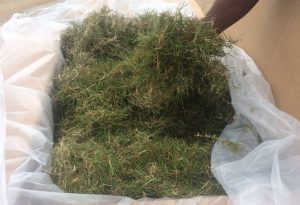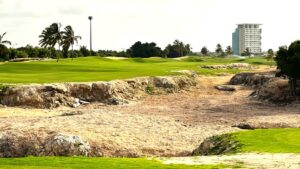Maybe your current turfgrass requires too much maintenance because it’s no longer the best choice for your climate or water quality. Or maybe you are noticing thinning turf or contamination. Whatever your reason, now is the time to try interseeding with a new turf variety.
What is interseeding?
Interseeding is a way to change from one turf species to another without disrupting play or closing down a facility.
Why should our project consider interseeding?
There are many benefits of interseeding: improved turf quality; lower costs than traditional seeding, re-sodding, or sprigging; less interruption to play while converting turfgrasses, and more. Read more about the benefits of interseeding.
Can I interseed Paspalum into Bermuda?
Yes. With proper planning and preparation, paspalum can be successfully seeded into bermuda and will eventually become the dominant turf species.
How long does it take to transition from one species to another when interseeding?
Many factors determine the amount of time it takes to transition from one species to another. Water quality, weather, ground preparation, and seeding rates can all play a determining factor on the time of transition. Please contact Atlas Turf for more information.
Can our golf course remain open for play when I interseed?
Yes, but you will need to be proactive and communicate with golfers, letting them know that course conditions may be wet and that foot or cart traffic could be limited on some parts of the course.
How do I prepare the ground before interseeding?
The goal should be to thin out as much of the unwanted turf as possible to allow the seed to have direct contact with the soil. Preparation could include verticutting, scalping, and in some cases, aerification. For a complete guide on land preparation, please contact Atlas Turf for detailed information.
How much water will I use growing in the seed once I interseed?
The goal is to keep the soil moist until the seed has germinated. Regular irrigation cycles will be needed for one week to as many as three weeks.
How much seed will I need to use?
The recommended seeding rate is 65 lbs to 130 lbs (30 kg’s to 60 kg’s) per acre. The amount of seed you use can determine how fast the turf will grow in and be playable.
What time of year is best to interseed?
The seed will germinate and grow in faster when the soil and air temperatures are rising to their summer maximum. It is not advisable to begin interseeding in the colder months of the year.
When can I mow the turf after interseeding?
It is recommended not to mow the turf until three to four weeks after the seed has germinated.
Will I need to interseed areas twice?
In some cases, extra seeding may be needed in areas where heavy rain may have washed some seed away or in areas that did not grow in because of heavy traffic.
Do you have a question about interseeding that we didn’t answer, or are you ready to convert to an improved turfgrass variety? Contact us today.
John Holmes
President, Atlas Turf



